Column Simple Preventive Measures You Can Implement in Your Daily Life to Avoid a Strained Back.
February 22, 2024
The strained back: a sudden, sharp pain in the lower back that makes it impossible to move.
Once you’ve experienced it, even if the pain goes away temporarily, it usually tends to recur.
In this article, we will explain how to prevent a sudden onset of lower back pain.
Symptoms and causes of lower back pain
The main symptom of a strained back is pain in the lower back area. It often occurs suddenly after lifting a heavy object, twisting one’s waist, or bending or arching one’s back too far.
The main causes of a strained back are: 1) damage to the intervertebral disc, 2) damage to the intervertebral joints, and 3) muscle damage.
The primal cause for such injuries can be found in one’s daily lifestyle. To be more specific:
・Lack of exercise, etc., which causes the muscles in the lower back and surrounding areas to become tense
・Your day-to-day posture (sitting too close to the edge of a chair, crossing your legs, sitting for long periods of time, stooping, sleeping on the floor, etc.)
・Irregular eating habits
・Stress.
If you are careful about these things, and improve each one of them, you can prevent a sudden onset of low back pain.
How to prevent a strained back
Reconsidering your lifestyle habits
As mentioned above, the trigger for a sudden back pain is often to be found in our daily lives, so by reviewing our daily habits, we can prevent those from happening.
For example, try not to cross your legs or sit with your buttocks sticking out on the side of the chair too much, and be aware of your sitting posture. Also, if you have to sit for long periods of time at work or during other activities, since it can put a lot of strain on your lower back, it’s a good idea to stand up regularly and do some light stretching, or to use a cushion to support your lower back when you sit.
Similarly, it is also important to re-evaluate your eating habits (avoid binge eating or eating late at night, etc.) and to make sure you are managing your stress levels.
Stretches to prevent a strained back
Strengthening the muscles around the lower back is also effective in preventing a sudden backache.
Here we will introduce some stretching exercises.
Stretching the hip joints
1. Sit on a chair with your legs spread out, pointing your toes slightly outward and aligning them with the direction of your knees.
2. Place your hands on your inner thighs.
3. Twist your chest so that your right shoulder comes forward, and then push your right inner thigh outwards with your right hand.
*Keep your eyes on your left elbow.
4. Hold for about three breathing cycles, then return to the original position.
5. Do the same with your left leg.
*Perform 3 to 5 sets as a rough guideline.

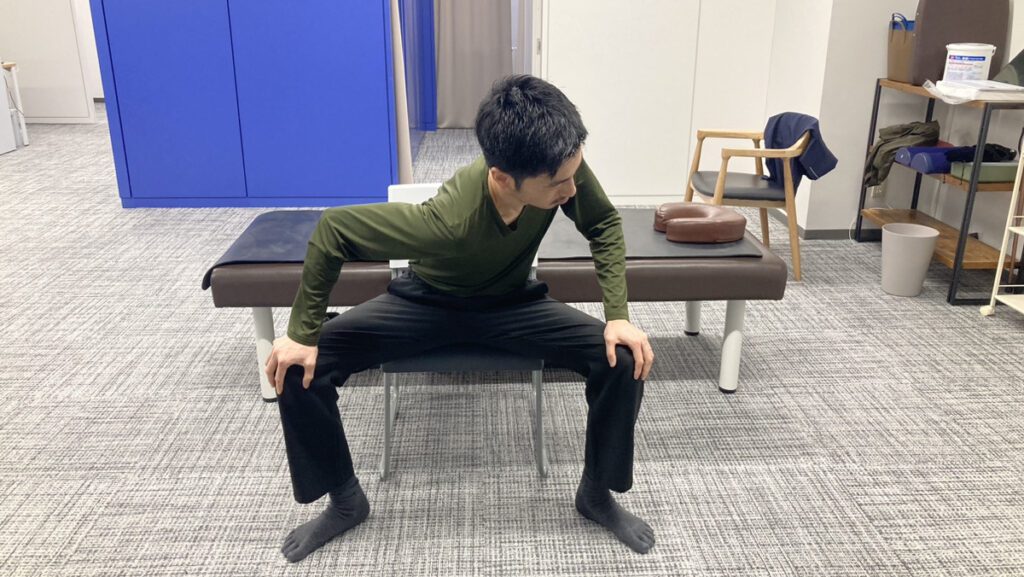
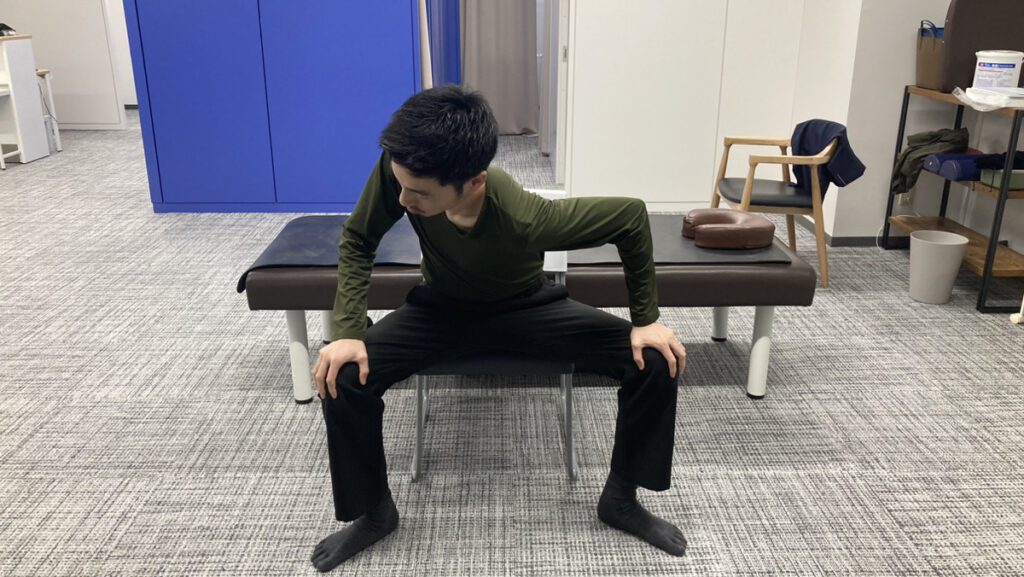
Calf Raises (to strengthen the calves)
1. Stand with your toes pointing forward.
2. While holding on to the back of a chair or a similar object, slowly raise both heels and stand on your toes.
3. Slowly return to the original position.
* Do this exercise 10 times as a rough guideline.
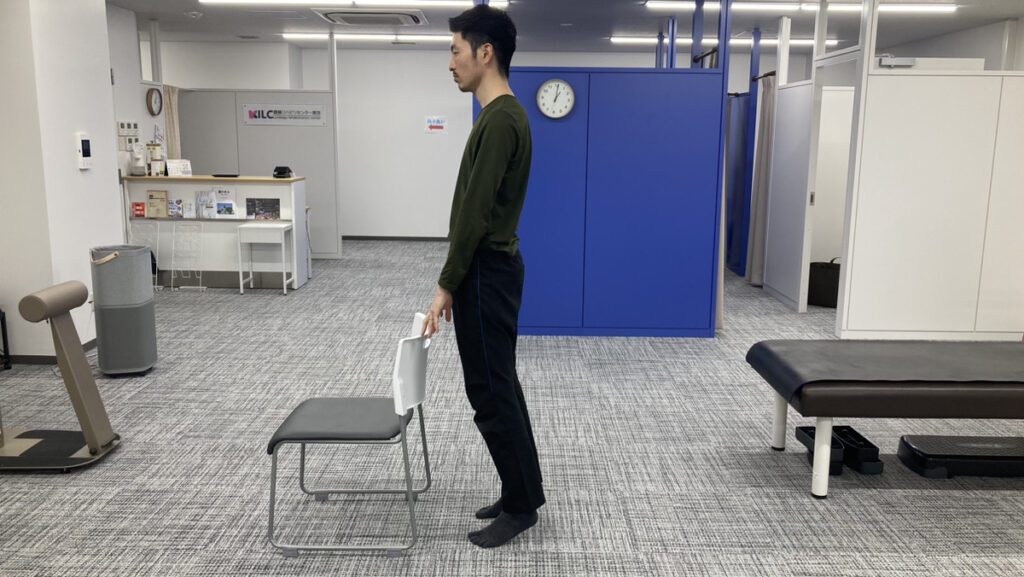
Drawing
Drawing is an effective exercise used for strengthening your inner muscles. If your inner muscles, such as the transverse abdominal muscle and multifidus muscle, which are located deep within your body, are weak, you will be more likely to suffer from a sudden backache, so it is worth doing as a way of prevention.
1. Lie on your back and raise both knees.
2. Pull your chin slightly in and stretch your spine.
3. Breathe in through your nose and breathe out through your mouth while keeping your body stationary.
4. As you exhale, tuck your navel in towards your back and then lift it up towards your chest.
5. When inhaling, be careful not to let your belly pop out as much as possible and breathe in through your chest.
* Do this about 10 times.
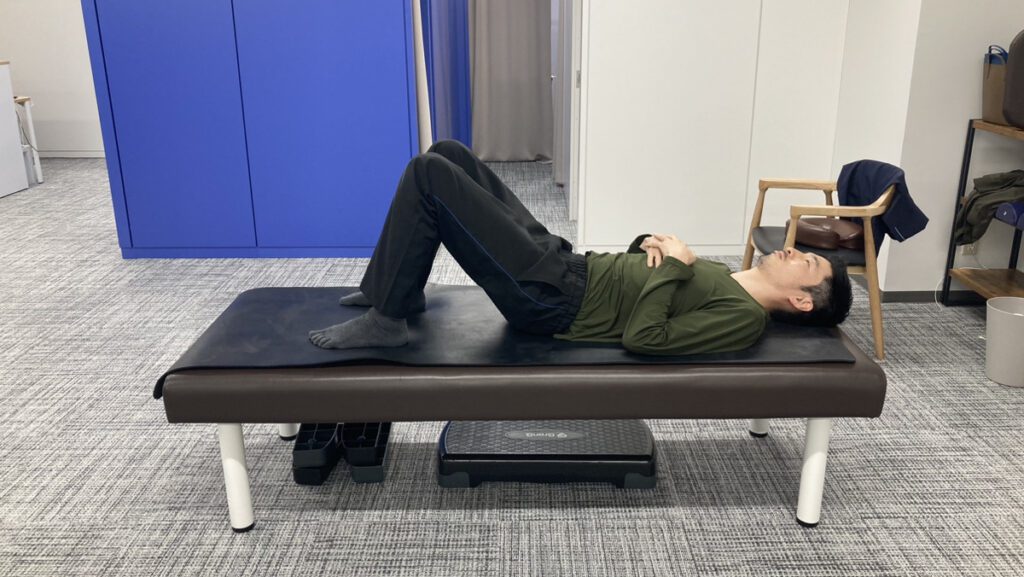
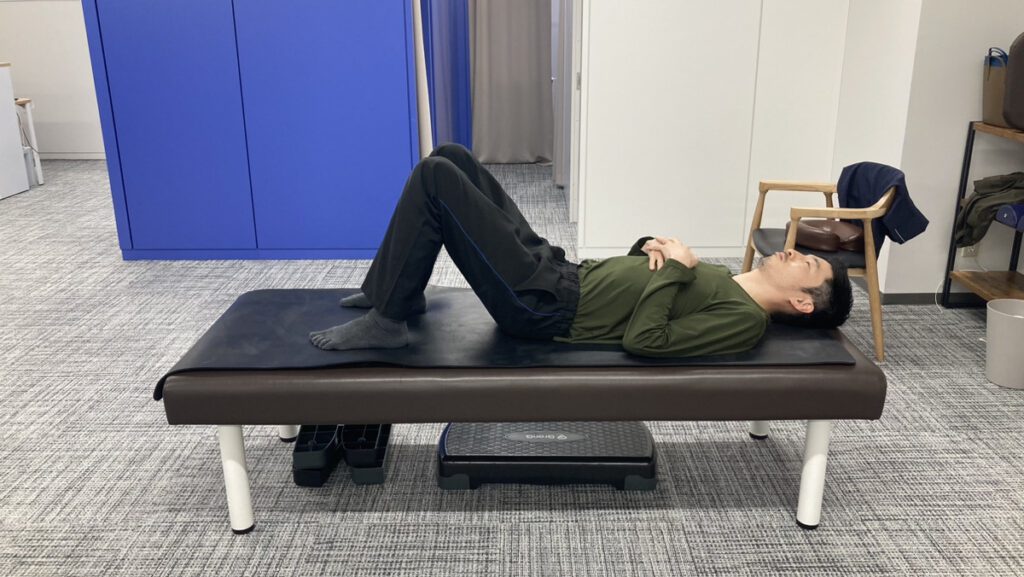
“Cat and Cow Stretch” in a sitting position
1. Sit on a chair with your legs spread out at about the width of your shoulders and bring your hands together in front of your body to form a circle.
2. As you exhale, round your back and look towards your stomach.
*Curl your back up like an angry cat.
3. While inhaling, bring your hands behind your back and arch your chest.
*Do this slowly, while being aware of the movement of your spine, and in time with your breathing (about 5 times).
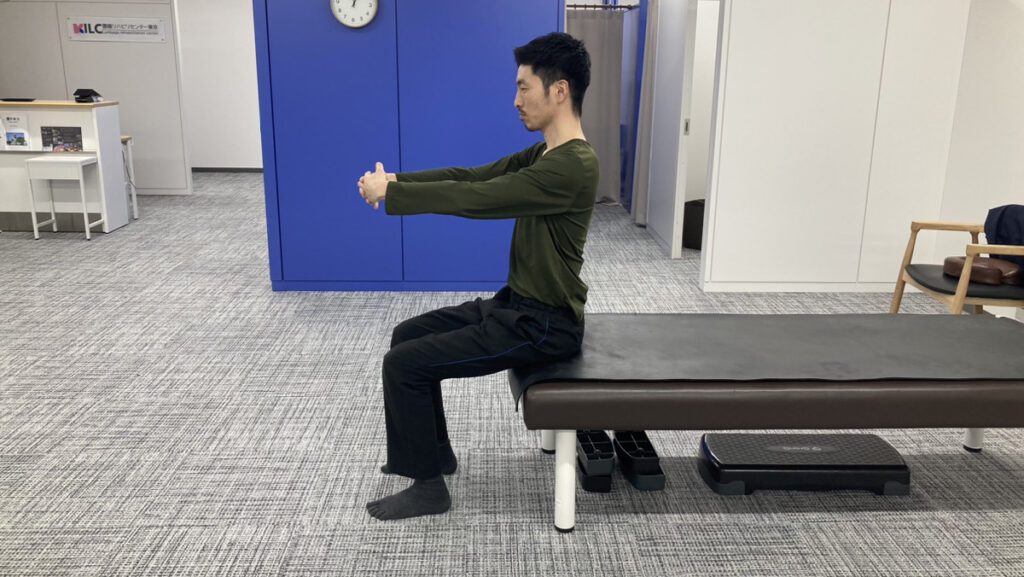
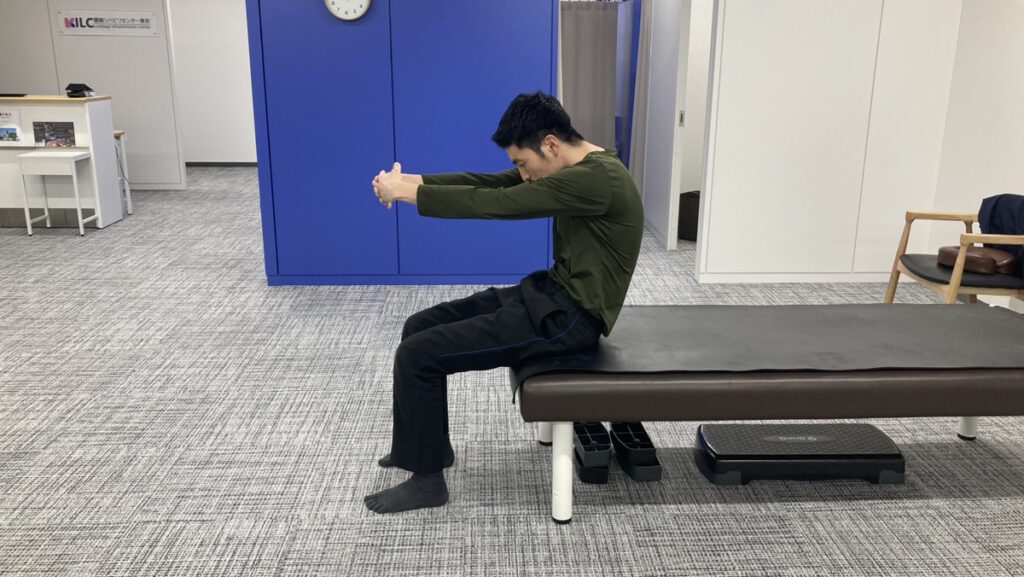
Treatment at our clinic
If the damage to the intervertebral disc, which is said to be one of the causes of a strained back, is not healed, there is a possibility that the symptoms will recur.
It is necessary to treat the damage to the intervertebral disc that is causing the pain.
The nucleus pulposus, which is the cushioning component of the intervertebral disc, gradually leaks out, causing the disc to gradually collapse. Collapsing discs can cause a variety of diseases.
Our Celgell method involves injecting a substance that fills the cracks in the intervertebral disc, causing it to gel and fill the cracks, allowing for a fundamental treatment. The volume of the intervertebral disc does not decrease, and the substance remains in the intervertebral disc as a gel-like implant after treatment, so the intervertebral disc is preserved.
In addition, we also offer “back pain-specific rehabilitation”, which can be used to treat both sudden back pain caused by the facet joints and sudden back pain caused by fascia and muscles.
ILC’s specialized back pain rehabilitation
If you are suffering from lower back pain or a strained back, please consider a consultation at our hospital.
Related Articles
What is the Best and Quickest Way to Cure a Strained Back?
What is a “Strained Back”? What is the Reason Behind it? What is the Formal Name of That Condition?



